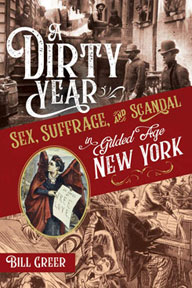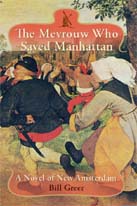Springtime in Rangoon
A Reminisce of a Tumultuous Week in Burma, 1988
[Full story also available as a PDF download]
The line of taxis waited outside Rangoon Airport. The cars looked like a row of favored antiques - maybe a sagging hinge, a door that did not quite close - but a burnished shine that revealed the care imbued over the years. Diane and I piled into a giant Russian Borca at the front of the stand. The hack said he had been driving it for 25 years. He knew all the tricks for keeping an ancient piece of machinery on the road.
Halfway into the city, the driver stopped in the middle of the street. He hollered into a nearby house. His son, a physics student at the university, ran out and climbed into the front seat. As we resumed our ride, he began describing the part of town we were passing through, a residential district of simple bamboo houses surrounded by lush tropical vegetation, domestic animals, and screaming children. The talk soon turned to life in Burma, which this family approached with an amiably resigned attitude. The military government had completely botched the running of the country, sending the economy into a tailspin over twenty years and repressing any dissent which might suggest others could do a better job. But with each member chipping in, a family could get by, could even get a college degree for the elder son as long as he did not become too overtly involved in student politics. By the way, did we want to change money? The son was offering what would turn out to be an excellent black market rate, 35 khats to the dollar for a hundred dollar bill, 32 for a twenty dollar bill, which was a less acceptable means of storing one’s wealth.
Our transport into the city during that spring of 1988 was emblematic of Rangoon. The Borca taxicab was the first of many signs that time had stopped in Burma’s capital, at least on the physical surface. The year the clock died was 1948, when the British empire packed its bags and returned the country to the Burmans. We cruised down a boulevard lined with town houses ornamented in high Victorian fashion. The facades retained traces of pastel yellows and blues, but the faded colors suggested the last paint had been applied during colonial days. The cracks appearing in the stonework were nothing compared to the fractures buckling the sidewalks, which turned a simple stroll into a scramble over a boulder-strewn field. We pulled up in front of the Strand Hotel, once a glorious outpost at the height of empire. While still the most luxurious accommodations in the capital, only its dimensions retained the old grandeur. The palatial lobby and enormous rooms were all worn around the edges. The frayed curtains and stained upholstery did not diminish the charm.
The scene around the hotel bustled with the ingenuity needed to overcome the difficulties of Burmese life. The pillared entryway swarmed with merchants eager to conduct business: purchase the tourists’ whisky and cigarettes, escort visitors into areas declared off-limits, trade some precious gems. This marketplace was open, apparently tolerated by the government as necessary for the people’s survival as long as it did not threaten established power structures. Behind the hotel, a crew demonstrated itself as masters of salvage as it dismantled a building piece by piece. Each brick was lifted off and scraped of its mortar, then stacked in neat rows. The timbers were routed in another direction, to await loading on a truck which rivaled our cab for its longevity.
The Burmans went about this work with an air of relaxed friendliness. They readily engaged in conversation with us, expressing cynicism about their government. One tourism official recalled fondly the parliamentary system that prevailed during the first decade of independence. Then the socialists took over, and they were more interested in building pagodas and golf courses than roads and rice paddies. But the complaining seemed almost good-natured, the problems part of their kharma but not really disturbing their inner harmony.
Upcountry, this illusion fell apart. In Mandalay two days later, we first heard hints of trouble in the capital. In Pagan, a guide shed some light on the tension bubbling beneath the surface. He had lost much of his life savings when the government declared several denominations of banknotes invalid. A lacquerware merchant showing us his factory warned us about our return to Rangoon. Trouble had erupted with some students. The government had closed the university. The capital was now under curfew.
Information is hard to come by in Burma and that was all we learned. Rangoon was bursting with soldiers when we returned at the end of our allotted week in the country. But the people seemed to be going about their business. We spent an uneventful 12 hours back in the capital and departed for Nepal.
Two months later, we landed in Boston. Burma had indeed been buttoned tight. Reports of the trouble in Rangoon were just leaking to the western press. The original incident during our visit was trivial. A group of students fought with some laborers over music coming from a tape player. But it led to the police being called and before it was over, several students had suffocated in the back of a police van. With the government entering a schizophrenic phase, indecisive whether to clamp down or allow steam to vent, the populace exploded into the streets. Eventually the army would shoot thousands of demonstrators.
Seven years have passed since that trip. Recent visitors have indicated the government has given Rangoon a facelift. Whitewash covers the faded pastels that evoked the colonial era. The Strand has been modernized into a world class hostelry. Repression stronger than ever has kept the noise low. A family struggles even harder to feed itself. But no amount of paint or violence could restore the early illusion of amiable acceptance and personal harmony. A new vision of the Burmese kharma emerged that spring. With the recent release of Aung San Suu Kyi, symbol of the nation’s thirst for democracy, the people have reentered the streets.
Originally published 1995.
MORE BURMA STORIES
One Day’s Adventure, Myanmar, 2002
Twilight at Ava: A British Mission to the Burmese Court, 1855
Bill's Books
A Novel of New Amsterdam
The Mevrouw Who Saved Manhattan
"[A] romp through the history of New Netherland that would surely have Petrus Stuyvesant complaining about the riot transpiring between its pages."
- de Halve Maen, Journal of the Holland Society of New York

